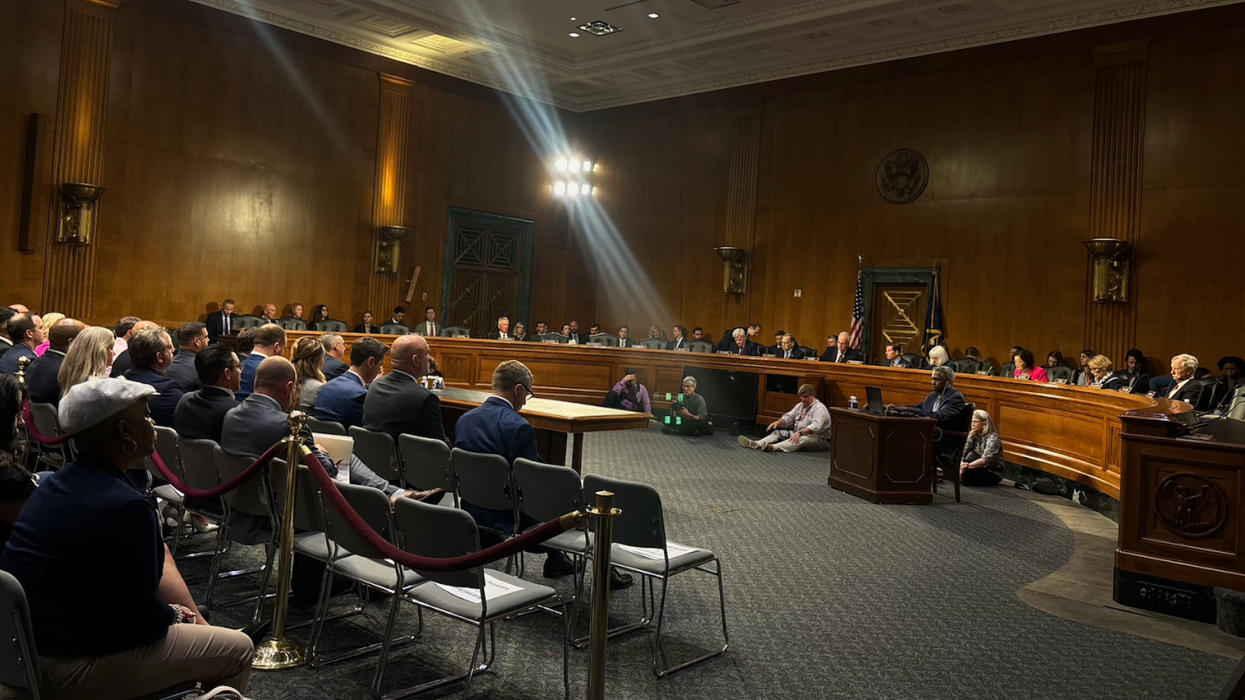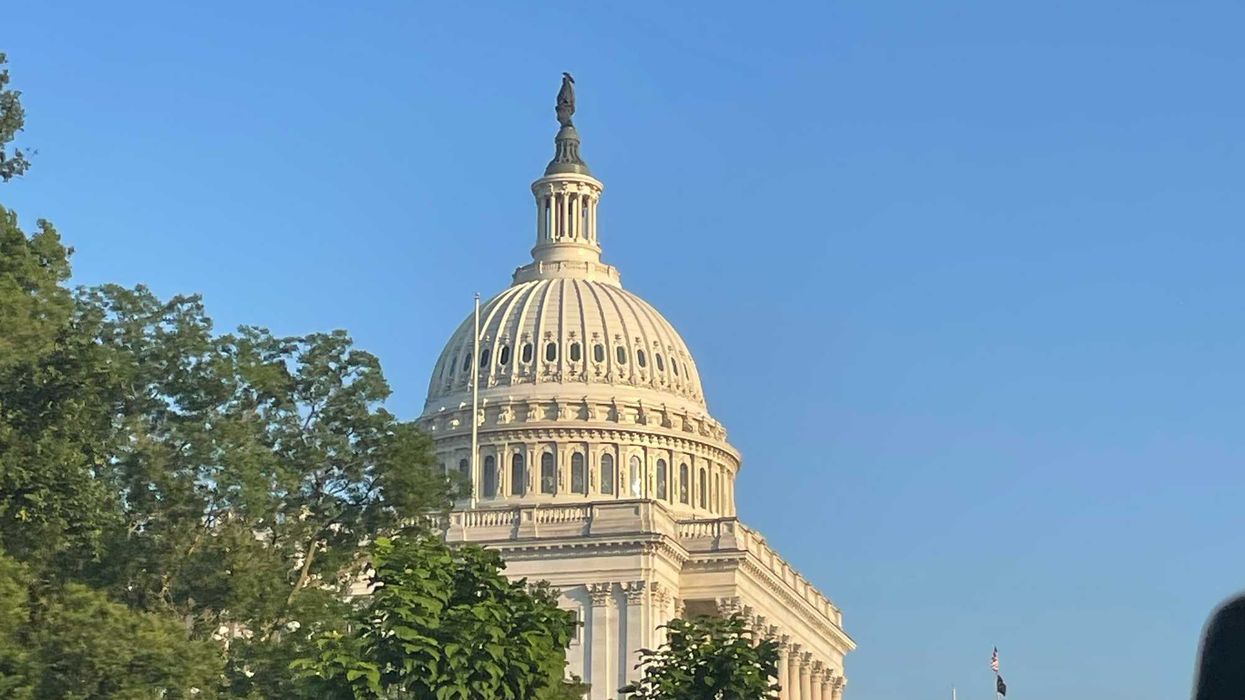WASHINGTON – Veterans Affairs Secretary Doug Collins faced bipartisan criticism on May 6 over plans to cut thousands of jobs across the department as part of the Trump administration’s major effort to “rightsize” the federal workforce. Republicans and Democrats alike described the sweeping layoffs and lack of transparency as a bureaucracy failing to deliver for its veterans.
“The department is at a critical juncture, and I want to hear from you that the changes underway at VA are backed by data,” said Chairman Jerry Moran (R-Kan.) of the National Republican Senatorial Committee. And that veterans’ voices are included within the conversation for change, Moran added.
Collins defended his agenda, pointing to long wait times and backed up disability claims that worsened during the Biden administration, despite an increase of more than 52,000 full-time employees. The VA system has been hindered for a long time by “bureaucracy that is out of control and bureaucracy that is not tame,” and is not serving its veterans, said Collins.
This hearing gave senators from both parties the opportunity to be critical of the Trump administration’s plans to overhaul the VA, criticizing the lack of a formal framework for how the changes would unfold or concrete data to justify how minimizing the department as a whole would provide better care for veterans overall.
“Year after year, the calls for VA reform come from every corner,” Collins said. “We have finally embarked on a historic effort to reform the VA.”
He highlighted his focus on cutting inefficiencies and eliminating non-essential roles while protecting frontline medical staff, and despite concerns of widespread layoffs, Collins claimed that fewer than 0.5% of employees had been affected so far.
However, committee members pressed Collins on the department’s repeated announcements since January, signaling major workforce reductions. Collins said he had no specific data to explain how such downsizing would benefit the veterans the department is mandated to serve.
“It’s very clear that our secretary has not come with much in the way of numbers. And I really don’t know how he's going to go about … getting to the 2019 figures for cutting employees, and you can't tell us about the categories of employees,” said Sen. Mazie Hirono (D-Hawaii).
Hirono then requested the secretary come back at a later date with data to explain the details of the cuts. Collins made no commitment to return.
Lawmakers expressed frustration over the lack of framework surrounding the VA’s workforce strategy, which the administration has said could eliminate up to 80,000 positions. The committee members suggested the 80,000 job cut goal seemed to be the start of a broader model that the VA will implement rather than just a fixed goal.
Sen. Thom Tillis (R-N.C.) described an encounter he had with veterans on his way to the hearing. “I ran into some folks at the elevator that are concerned about the proposed 83,000 cuts in the VA, and they asked me specifically would I publicly oppose those cuts. I said ‘I can’t,’” he said, because the Trump administration has failed to provide a blueprint for the major changes.
Still, Tillis voiced his reservations on the cuts, given the lack of a formal plan for them.
“I don’t believe cuts are real unless there’s a recession package sent to the U.S. Congress so we codify those cuts. And so, my commitment to the folks I was talking to, when I see that recessions package, if it’s at odds with what I consider to be in the best interest of the VA, then I may vote against it,” Tillis added.
Sen. Tommy Tuberville (R-Ala.) raised concerns about inefficiency, asking whether the problem was less about the number of employees and more about how the VA system operates.
“I often hear a lot about the large amounts of paperwork and administrative burden VA doctors are forced to navigate when seeing patients. This leads to VA doctors seeing less patients per day,” Tuberville said. “Where do you see the opportunity to reduce all these administrative processes?” he asked.
Collins answered, “This has nothing to do with employees and has nothing to do with money gauges, but simply, are we doing it most efficiently in the process?”
Collins repeatedly said the administration would cut positions in diversity, equity, and inclusion and interior designers for VA facilities. Yet, Elissa Slotkin (D-Mich.) said she was told by veterans in her district that the Trump administration fired staff who operated a suicide hotline for veterans.
“So, how about people fired and then rehired from the veteran suicide hotline?” Slotkin asked.
On the other hand, Sen. Maggie Hassan (D-N.H.) questioned how it would be possible to fire so many employees, 80,000, without impacting the VA’s core functions. She said about 25% of VA employees are veterans themselves.
“It's also worth noting that the Veterans Health Administration accounts for nearly 90% of all VA employees, so if you're firing evenly across the VA, you'll end up firing roughly 70,000 VHA employees,” Hassan calculated. “So, Secretary Collins, is your goal to fire thousands of VA employees who work to support and provide health care to our veterans?”
Senators from both parties questioned Collins’ rationale for pursuing significant staffing cuts while the department simultaneously faces rising demand for services. Multiple committee members warned that Collins’ plans to minimize the VA will make services worse over time. This is because current military recruiting projections are up, leading to a continued cycle of the VA being under-resourced and veterans being underserved.
“I just left a meeting with our rural hospitals and they are willing to be a provider,” Sen. Marsha Blackburn (R-Tenn.) said. “It is so much more convenient for our veterans to get the healthcare they have earned, and to get it in their communities, when they want it, where they want it, at their convenience. I think that community care is something that should be moved on today,” she stated.
Blackburn questioned the secretary on how many employees have been terminated at this point. Collins responded, stating that about 1,000 positions had been eliminated to date but that more cuts were anticipated.
“Your goal is to fire 15% of the total workforce,” Sen. Richard Blumenthal (D-Conn.) said. “You're going to lose quality. You're going to lose time. There's no way around it. Now, I welcome your commitment that the savings you just told Senator Banks will go into care for our veterans, but that's not what you said on April 17. You said ‘That'll be up to the president.’”
Despite the mounting criticism by the committee members and the lack of concrete data presented by the secretary, Collins remained firm in his assertion that the administration’s approach aligns with its promise for veterans. “I think that the budget presented by the president is actually one that fulfills the commitment that we've talked about, making sure our veterans are taken care of,” he said.
























 Source: Corporate Pero Latinos
Source: Corporate Pero Latinos Source: Corporate Pero Latinos
Source: Corporate Pero Latinos Source: Corporate Pero Latinos
Source: Corporate Pero Latinos